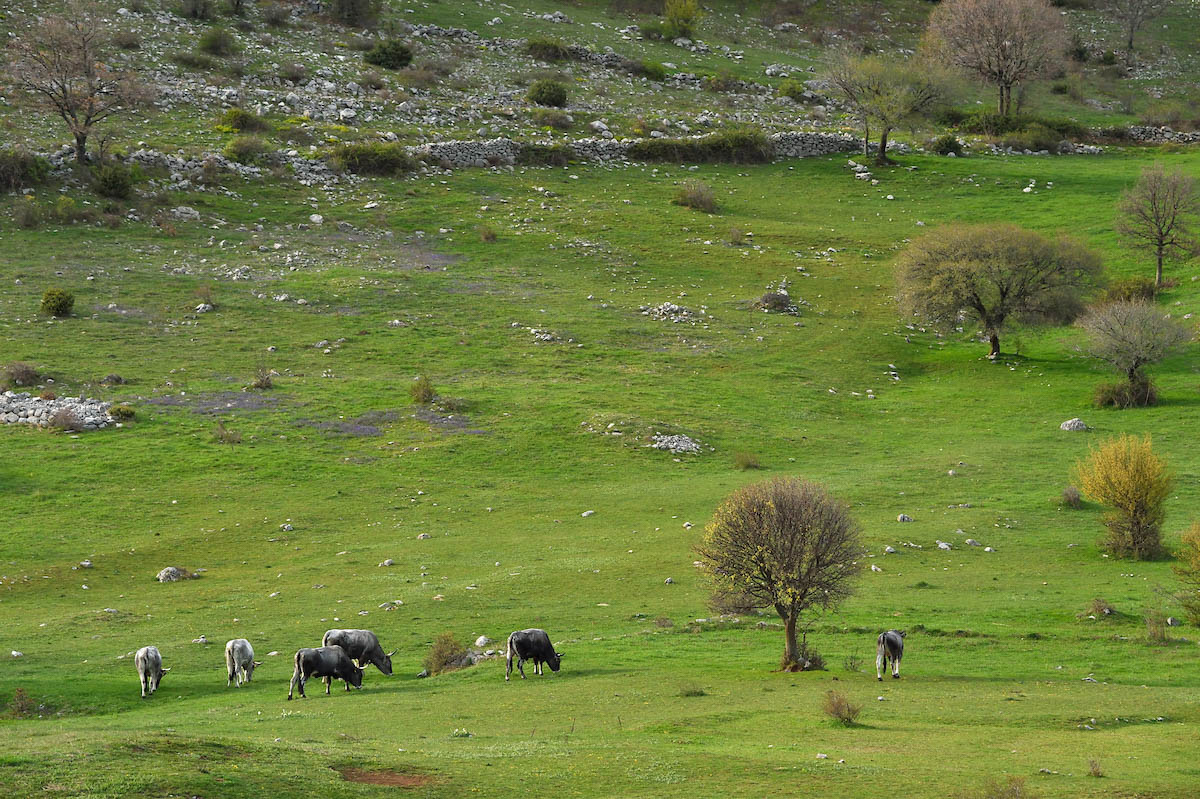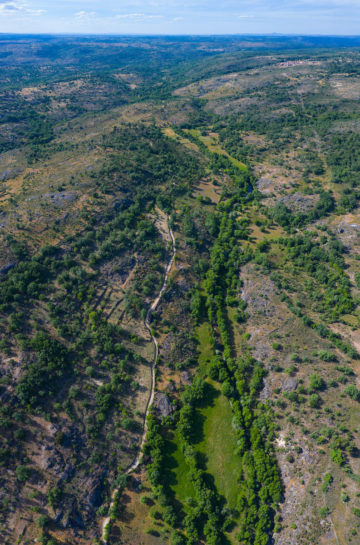Restoring natural areas to their healthy and varied state lead to benefits that are not to be underestimated. Other than holding more water, preventing soil erosion, and creating a habitat for wildlife, wild and varied grasslands has a natural way of storing and sequestering CO2 (carbon dioxide). What if curbing our emissions would not only mean to give up and hand in, but actually lead to the highly visual and experiential restoration and protection of European wilderness?

Carbon storage and sequestration is very well known to occur in forests, but the evidence is growing that also wild grasslands are very effective carbon sinks. Grasses are very efficient in capturing carbon, and in combination with natural grazers, their dung and dung beetles, large amounts of carbon end up in the grass and soils under grasslands. At the same time, investment is needed for the restoration and the protection of wild grasslands, as currently one of the most threatened ecosystems in the world. The idea that I worked out in my research for Rewilding Europe is to use wild grassland as carbon sinks to generate income from carbon markets.
The amount of carbon stored in lands with artificial land use practices such as the use of pesticides and fertilizers, intensive presence of cattle, and monoculture crops is lower than in wild varied grasslands. In my study I show that most natural grasslands store approximately 2–3 tonnes of CO2/ha/year.
As such the rewilding of grasslands, on soils that are degraded due to intensive agriculture, engenders a potential to substantially increase soil organic matter. Assuming the unrestored soil was not sequestering any carbon – or only very little – then it is possible to offer grassland restoration to the voluntary carbon market where grassland restoration secures carbon credits (one carbon credit is equivalent sequestering or stopping the emission of one tonne CO2e).

Using the Coa Valley in Portugal as a case study, the area contains about 36,000 ha of land that has recently come out of agriculture or faces an uncertain agricultural future. If we assume that carbon sequestration on these soils is about zero (could even be negative) and that by rewilding, through the restoration of natural processes such as natural grazing, typical natural grassland sequestration rates of 2.5 tonnes CO2e per ha per year can be achieved, it would be possible to offer to voluntary carbon market, 90,000 carbon credits per year. The value of these credits depends on what a buyer might want to pay on the voluntary carbon market but if valued using the current EU carbon trading scheme value of €24 euros per tonne CO2e, these carbon credits could raise about €2.1m per year. This value could be blended with other finance such as Common Agricultural Policy subsidies (especially if EU policy moved the CAP towards climate change mitigation as suggested as part of the Green New Deal) and nature tourism income from rewilded land. Such an approach is exciting as it would provide for a new future for land that is no longer suitable for agriculture.
The high potential of this idea is based on three interconnected factors:
- A high-quality, transparent, and nature-based carbon offset project is very attractive to the fast-growing group of potential buyers to choose for a project that contributes to the development of biodiverse European landscapes.
- Economically viable and sustainable land-use models – based on carbon storage and sequestration – have the potential to influence European agricultural policy and subsidy-schemes. if these land-use models show to lead to more public goods than the ones derived from conventional models.
- Having a growing market for offsetting in wild grasslands and a more supportive European policy will boost the transition of abandoned landscapes into those critically important grassy ecosystems.

Selling land-based carbon credits on the voluntary carbon market provides an important financial mechanism to engineer a switch of land-use from a source to a sink of atmospheric carbon. Additionally, some companies may seek to use this mechanism as part of their transition to carbon neutrality, particularly for those industries where technical solutions are not yet available (such as the aviation industry) to achieve net zero. Other financial mechanisms are as important. In the EU, the biggest driver of land-use and land use change is the Common Agricultural Policy and reform the Common Agricultural Policy is essential to meet EU climate policy. Regulation to protect carbon rich landscapes and encourage restoration of carbon sequestering land-use will also be important.
The idea is that investment is attracted by the sales of carbon credits can increase the financial means of nature organisations to undertake projects that directly contribute to the expansion of wild grasslands and their capacity as carbon sinks. This leads to visible and experiential European wilderness that can be experienced by everyone. More research needs to be done on this topic, and hopefully pilot projects can be started to experiment the workability of this idea.
This blog is created as part of GRAZELIFE, a project that evaluates the benefits of various land management models involving domesticated and wild/semi-wild herbivores. The project is carried out at the request of the European Commission. The GRAZELIFE Consortium gathers information with literature reviews, interviews with more than 100 stakeholders and field research in 8 European regions. With these series of blogs the 10 Consortium-partners are sharing experiences and insights, that could contribute to a fruitful discussion on best practices in grazing systems. The content of these blogs are the sole responsibility of the writers.